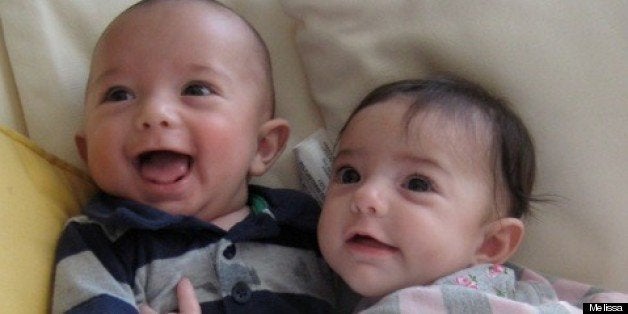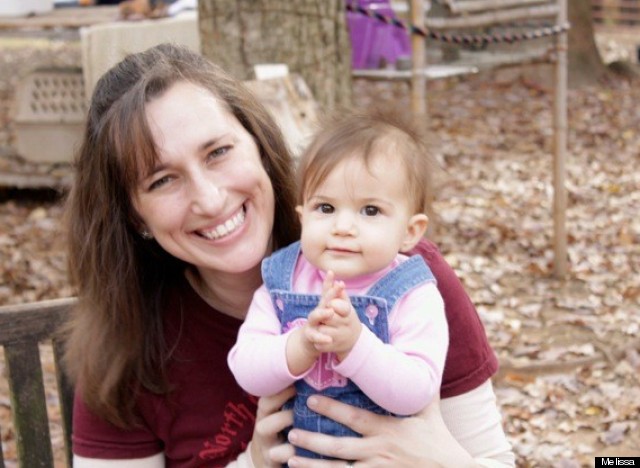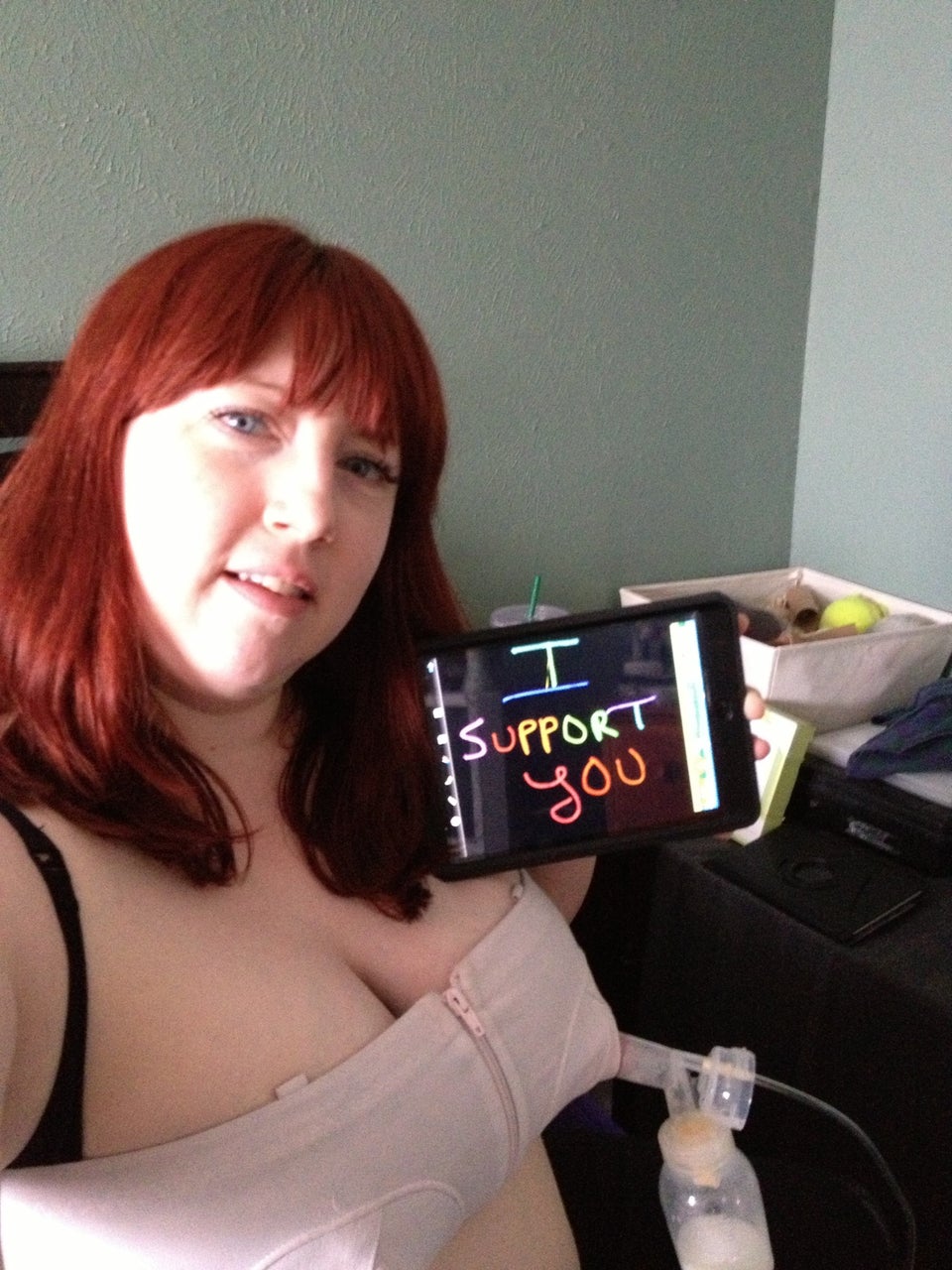
Breastfeeding her twins -- a boy and a girl, born two weeks early -- mattered very much to Melissa, 38, a special education teacher from North Carolina. But when they quickly started losing weight, she and her husband were forced to turn to options like donor milk and a supplemental nursing system to make it happen. As part of our series on what it's really like for new moms to breastfeed, Melissa talks about how it feels to rely on donor milk, and how dramatically nursing can vary from child to child.
The Birth
The twins came two weeks early, so they actually made it a long time for twins. I didn't want a cesarean section, but at 38 weeks, my doctor was really insistent that I needed one. It was the end of June, and I was so swollen. I had so much water retention, I ended up needing carpal tunnel surgery to reduce the pressure in my hands, and my doctors were worried about permanent nerve damage. They thought that maybe I could deliver my daughter vaginally, but I'd need a C-section for my boy. I didn't want to do both, so we went with the C-section.
The nurses at the hospital were fabulous. As soon as the babies were born and cleaned up, we tried nursing. I knew I wanted to breastfeed, but I didn't know what to expect. I knew there was a learning curve, but it hurt, and there I was in the hospital, watching their weight drop. The doctor said that we had to start supplementing, because their weights were getting really low. He said we could do formula or donor milk. We were really fortunate that there was a milk bank right there in the hospital.
Going Donor
I had heard about donor milk before, but I had a lot of questions about how it works and where the milk comes from. Ultimately though, breastfeeding was so important to me. Selfishly, there were health reasons -- there's breast cancer in my family, and I know breastfeeding can help reduce the risk. Plus, I wanted the twins to have the health benefits of breast milk, so at the end of the day, that's what we went with.
It's amazingly expensive, probably $4 to $5 an ounce. It was a lot of money, but we knew it wasn't going to go on forever, and knew that we really wanted to provide our babies with breast milk. We probably used donor milk for almost two months. I haven't calculated what it was total ... but it was a lot.
The fact that it came from other women was a total non-issue for me. If anything, it seemed like such an amazing gift for these women to be able to provide milk to babies who need it. And we knew it had been screened and tested.
How It Worked
We ended up using an SNS system that we snaked through a nipple shield. [Supplemental nursing systems include a container that can be filled with formula or donor milk that is attached to a long, thin tube. That tube is taped to a woman's breast, so when a baby feeds, he or she eats from both the mother and the container.] I hated it. My husband and I would try and keep it light, joking that our babies were getting milk from seven women, because the donor milk was mixed from six women, plus mine! It might have been the exhaustion [laughs]. My daughter was also tongue-tied, so we took her to a feeding specialist, which helped.
By four months, we had been able to knock out the SNS system and we had faded out the donor milk, although I continued to use the nipple shield with my son. We made it to 10 months total. I would nurse one baby and the other baby would get a bottle of breast milk, and then on the next feeding, we'd switch. After every feeding, I was pumping.
The Hardest Part
It was really, really hard hearing other moms talk about how they found breastfeeding easy. That was their story, and it was great for them, but it wasn't mine, and I was envious. I was also really hurt by comments, like, "You're really struggling with this, why don't you give up and give them formula? Why are you putting yourself through this?" You start to wonder, am I just being stubborn?
... And The Best
I loved nursing them in the morning, when they'd look up at me and I'd look down at them. We were so connected.
The Next Go 'Round
I really want women to hear that just because you struggle with one baby, doesn't mean you will with the next. In 2012, I had a baby girl, who is 17 months now and she's still breastfeeding. Before she was born, I was nervous, and we did have some initial struggles, but nothing like the issues I had with my twins -- I even had an oversupply of milk and was able to donate some of it. No one has really told me why it's been so different, but I think it might have to do with the fact that I went 42 weeks with my third child and had a VBAC [vaginal birth after cesarean]. I couldn't have gone so long medically with my twins, but I'm convinced that letting my body do things on its own schedule made a huge difference.
But I'm really proud that I made it to 10 months with the twins. It was hard, and it took a lot of work to get there, but I'm so glad we did.

Melissa's experience with her third child, Emma, proves that no two breastfeeding experiences are ever the same.
This account has been edited and condensed.
In celebration of World Breastfeeding Week (Aug. 1-7), HuffPost Parents is participating in "I Support You," an initiative to collect photos and messages from mothers to each other that say we might lead different lives but we share wanting the best for our children. Find out more here.
